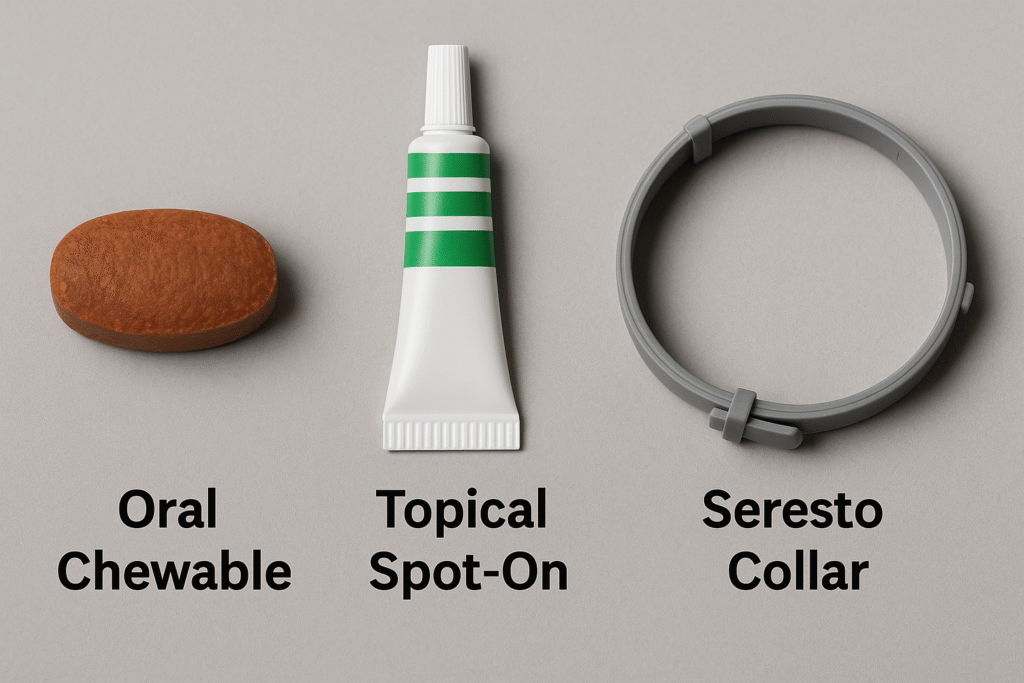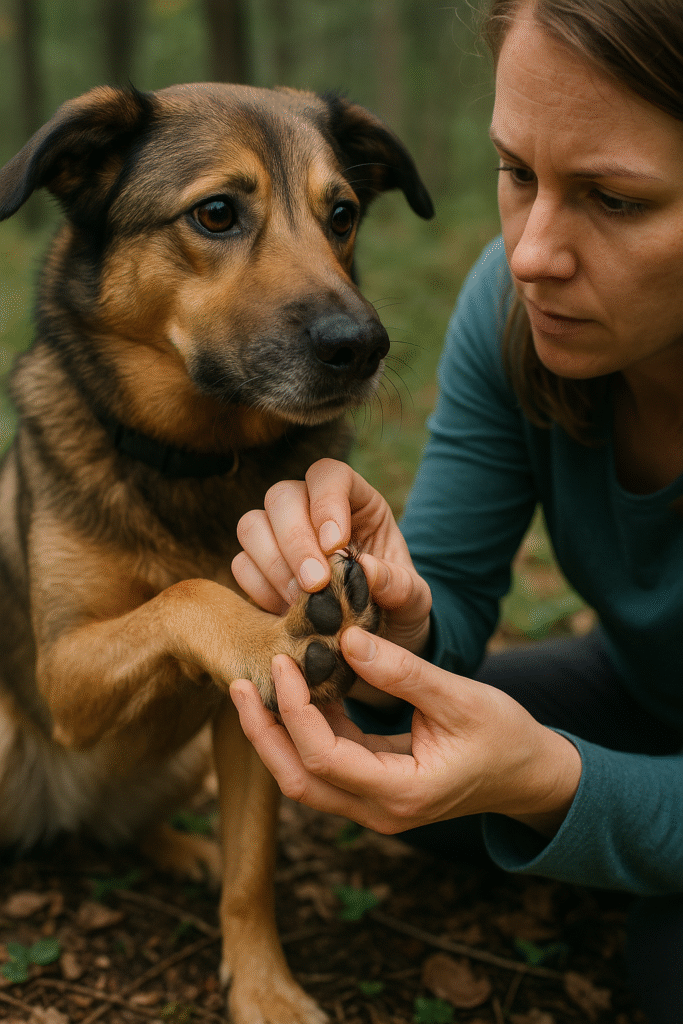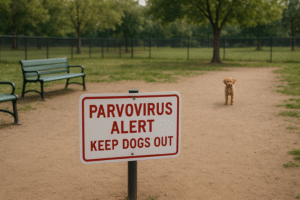Table of Contents
Introduction
If you’re a Canadian dog owner, chances are you’ve heard about the rising concern around Lyme disease in dogs. It’s no longer just a seasonal threat in tick-heavy regions like southern Ontario or the Maritimes. Thanks to warming temperatures and expanding tick habitats, even urban and western provinces are seeing cases. As a small-animal vet here in Ottawa, I’ve diagnosed more positive Lyme tests in the past two years than I did in the five years before that combined.
And it’s not just about location anymore. New research from 2023 through 2025 shows that Lyme disease in dogs can occur outside traditional “tick season” and that the best protection involves a multi-layered approach. Think: consistent year-round tick control, vaccines for at-risk dogs, smarter landscaping, and newer treatments emerging from human and veterinary studies.
This article breaks down 2025’s best strategies to prevent Lyme disease in dogs with practical advice, science-backed tips, and real-world tools you can use right away. Whether your dog hikes every weekend or mostly lounges in a backyard, there’s a prevention plan here that fits your lifestyle.
Key Takeaways: Preventing Lyme Disease in Dogs (2025)
- Lyme disease in dogs is spreading beyond traditional regions and seasons across Canada.
- Year-round tick prevention, oral, topical, or collars, is essential in 2025.
- Vaccination is strongly recommended for dogs living in or visiting high-risk areas.
- Tick-safe landscaping and daily checks significantly lower your dog’s exposure risk.
- New human-based tick prevention research (like TP-05) could influence future dog treatments.
- Annual Lyme testing helps detect early exposure and tracks changing risk zones.
- Prevention isn’t one-size-fits-all: your vet can help tailor the safest, most effective plan.
Understanding the Risk: Tick Zones Are Growing in 2025
You can also visit: https://doglifeexpert.com/reasons-the-canine-parvovirus-threat-is-growing/

In 2025, preventing Lyme disease in dogs begins with understanding how much the risk has changed. Once considered a problem mostly in the Northeastern U.S. and parts of Ontario, black-legged ticks (Ixodes scapularis) now thrive in broader swaths of Canada, including Quebec, Manitoba, and British Columbia. According to the 2025 Pet Parasite Forecast, climate shifts and increased wildlife movement have extended both the geographic reach and the seasonality of tick activity.
This means Lyme disease in dogs is no longer limited to spring and summer. A 2024 European case study found canine tick-borne infections even in cooler months, especially during mild winters. These findings mirror what we’re seeing in Canadian clinics, dogs presenting with clinical signs in November or even February.
The expanding risk demands a change in mindset. We can’t rely on seasonal tick prevention alone. Today’s best strategies to prevent Lyme disease in dogs must assume year-round exposure, even if your dog isn’t a camper or trail runner.
Strategy #1: Year-Round Tick Prevention Is Essential

The cornerstone of any 2025 prevention plan for Lyme disease in dogs is continuous tick control. Gone are the days of “April to October” dosing. Ticks are active whenever temperatures stay above 4°C—even in winter warm spells. That’s why veterinary groups like the Companion Animal Parasite Council (CAPC) and the American College of Veterinary Internal Medicine recommend year-round use of tick-killing products.
There are three main categories of acaricides (tick-killing preventives):
- Oral chewables like lotilaner (Credelio), afoxolaner (NexGard), and sarolaner (Simparica) kill ticks systemically for up to 4–12 weeks.
- Topical treatments (like Advantix II or Revolution Plus) create a barrier and are useful for dogs that won’t take pills.
- Collars like Seresto provide continuous tick protection for up to 8 months.
Several peer-reviewed studies, including data cited by the Global Lyme Alliance, show that consistent use of these products significantly reduces both infection rates and disease severity in high-risk areas.
Real-world vet tip: I’ve had clients forget just one month of their dog’s tick meds, only to return weeks later with a tick bite. With Lyme disease in dogs, that one lapse can be enough for transmission. Ask your vet to set automated refills or reminders; you’ll thank yourself later.
Strategy #2: Vaccination Adds Crucial Protection

While no vaccine is 100% effective, the Lyme vaccine offers a strong second line of defense, especially for dogs in tick-endemic or expanding-risk zones. In 2025, veterinarians increasingly recommend combining Lyme disease vaccination in dogs with year-round tick preventives for maximum protection.
Available vaccines include:
- Recombinant OspA-based vaccines block the bacteria (Borrelia burgdorferi) in the tick’s gut before it transmits to your dog.
- Multi-antigen vaccines, which target several proteins to broaden the immune response.
Recent field data cited by the Global Lyme Alliance shows vaccine effectiveness between 60% and 86%. This aligns with CAPC’s guidance to vaccinate dogs who:
- Live in or travel to high-incidence areas
- Spend time hiking, hunting, or in brushy rural spaces
- Have had a prior positive Lyme test
According to the 2025 CAPC forecast, more Canadian regions are now considered medium- to high-risk zones, making vaccination more widely applicable than ever.
Vet insight: I always remind clients that the vaccine doesn’t prevent tick bites. It’s a smart layer of protection, not a replacement for acaricides. Most of my Lyme-positive cases were dogs vaccinated but not on regular tick meds.
Strategy #3: Control Your Dog’s Environment and Check for Ticks Daily

Preventing Lyme disease in dogs isn’t just about medication; it’s also about daily habits and smart landscaping. Ticks love shady, moist areas: tall grass, wooded trails, piles of leaf litter, and even untrimmed hedges around your backyard.
Simple environmental steps can drastically lower your dog’s exposure:
- Keep your lawn mowed and clear of debris.
- Create 3-foot-wide woodchip or gravel borders around outdoor spaces.
- Avoid walking your dog through overgrown brush or unmaintained trails.
When you return from outdoor activities, do a full-body tick check on your dog. Focus on:
- Ears and behind them
- Under collars and harnesses
- Between toes
- Around the eyes and armpits
Removing a tick within 36 hours greatly reduces the chance of transmission. According to a Vet in Georgetown and Wikipedia’s Lyme disease article, Borrelia burgdorferi takes time to migrate from the tick to the dog’s bloodstream, so early removal is key.
Pro tip: Keep a dedicated tick comb and flashlight near your dog’s leash. I’ve found many early-stage ticks on clients’ pets just by running a quick check after evening walks. Preventing Lyme disease in dogs can literally be a 2-minute daily habit.
Strategy #4: Promising New Products on the Horizon

Looking beyond current options, 2025 has brought a wave of exciting research that could transform how we prevent Lyme disease in dogs in the coming years. One standout is TP-05, a human oral formulation of lotilaner, the same drug used in veterinary chewables like Credelio. It’s designed to make a person’s blood lethal to ticks before they can transmit disease.
According to Tufts Medicine, TP-05 has already passed Phase II trials in humans. While it’s not available for dogs yet, this research reinforces the effectiveness of systemic tick control already used in pets.
The WIRED article covering this breakthrough highlights a key idea: killing the tick before it bites may be the future of Lyme prevention.
What does this mean for you now?
- Systemic tick treatments (oral preventives) are backed by both human and veterinary science.
- Continued innovation in tick-killing pharmacology could lead to even more effective, safer products for dogs in the next few years.
Vet insight: As a vet who’s prescribed Credelio since its release, I’ve seen how well systemic products work not just in killing ticks, but in preventing secondary issues like skin infections from tick bites. The science behind TP-05 gives me even more confidence in recommending oral acaricides today.
Strategy #5: Annual Testing & the One Health Connection

Even with top-tier prevention, exposure can still occur, especially in high-risk zones. That’s why annual testing remains a vital part of any 2025 plan to prevent Lyme disease in dogs. The most commonly used diagnostic is the SNAP 4Dx Plus test, which screens for Borrelia burgdorferi antibodies along with other tick-borne pathogens like Ehrlichia and Anaplasma.
According to PubMed Central, dog seroprevalence often mirrors human Lyme risk in a given region. Researchers use dogs as early warning indicators for rising tick exposure in communities. This ties into what the veterinary world calls a One Health approach, recognizing that human, animal, and environmental health are interconnected.
The AVMA and PMC One Health overview both advocate for this model: by protecting dogs from Lyme disease, we help lower the broader tick burden in shared spaces like parks and trails.
Vet insight: I make a habit of running tick-borne disease panels during spring checkups, especially for dogs who travel between provinces or have unknown tick exposure. Testing is fast, affordable, and can uncover silent infections that might otherwise go missed.
Quick Summary: 2025’s Best Lyme Prevention Strategies for Dogs
This summary table offers a quick reference to the five core strategies covered in this guide. Each method supports a layered approach to preventing Lyme disease in dogs.
| Strategy | Why It Matters in 2025 |
|---|---|
| 1. Year-round tick control | Maintains consistent protection against tick bites and transmission of Borrelia burgdorferi |
| 2. Vaccination for at-risk dogs | Adds immune defense in high-risk zones; reduces symptom severity even if exposure occurs |
| 3. Tick-safe environments & daily checks | Physically reduces tick encounters; early removal blocks disease transmission |
| 4. Emerging oral acaricides | Promising research like TP-05 supports proactive, systemic tick killing |
| 5. Annual testing & One Health awareness | Tracks exposure, detects silent infections, and supports broader community tick safety |
When these five strategies are combined, the risk of Lyme disease in dogs drops dramatically, no matter your location or your dog’s lifestyle.
Practical Tips for Canadian Dog Owners

Putting prevention into action doesn’t have to be complicated. Here’s how you can build a daily, monthly, and seasonal routine to help protect your pet from Lyme disease in dogs in 2025.
5-Minute Home Tick Prevention Checklist
- Give monthly chewable or apply topical treatment
- Confirm the flea/tick collar is snug and functional
- Scan ears, belly, toes, and armpits after walks
- Keep grass trimmed and leaf piles cleared
- Record the date of the last tick preventive dose
🇨🇦 Typical Canadian Costs (2025 Estimates)
| Service/Product | Approx. Cost (CAD) |
|---|---|
| Monthly oral tick prevention | $25–$45 per month |
| Lyme vaccine series (2 doses) | $90–$140 total |
| SNAP 4Dx test (annual) | $60–$100 |
| Tick removal tool kit | $10–$20 |
| Veterinary tick consult | $70–$120 (exam fee) |
These prices may vary by province, clinic, and dog size, but they offer a starting point for planning year-round protection.
Additional Tips
- Sync your dog’s tick prevention schedule with your calendar or vet’s app.
- If you travel between provinces, ask your vet about localized tick risk maps.
- Stay alert during mild winters; ticks don’t always die off in December anymore.
Vet reminder: I’ve treated dogs from Toronto to Gatineau who tested positive despite “winter breaks” in tick protection. Lyme disease in dogs is now a four-season issue.
FAQs: People Also Ask About Lyme Disease in Dogs
1. Do dogs need Lyme vaccines if they’re already on tick prevention?
Yes, especially in high-risk areas. Tick preventives reduce bites but aren’t foolproof. Vaccines add an extra layer of protection by helping the dog’s immune system respond if exposure does occur. The combined approach is widely recommended to prevent Lyme disease in dogs.
2. What are the symptoms of Lyme disease in dogs?
Common symptoms include shifting-leg lameness, fever, swollen joints, lethargy, and loss of appetite. Some dogs may develop kidney complications. However, many infected dogs show no signs, making annual testing essential for early detection.
3. Can my dog still get Lyme disease even if vaccinated?
Yes. Vaccines reduce the risk and severity of disease, but they don’t guarantee full protection. No vaccine prevents the tick from biting. This is why year-round tick control is still necessary, even for vaccinated dogs.
4. How soon after a tick bite should I test my dog?
Testing immediately isn’t helpful. Antibodies to Borrelia burgdorferi usually take 4–6 weeks to develop. Your vet may recommend waiting and re-testing later, especially if the tick was attached for more than 24 hours.
5. Are there natural ways to prevent Lyme disease in dogs?
While some natural sprays or essential oils may repel ticks, they are not reliable substitutes for prescription products. Always consult your veterinarian before using non-traditional tick preventives, as some can be toxic to pets.
Final Thoughts: Your 2025 Plan to Prevent Lyme Disease in Dogs
Lyme disease in dogs is no longer rare, seasonal, or limited to a few forested pockets. In 2025, it’s a growing concern across much of Canada and one that every dog owner should be prepared for. But here’s the good news: prevention is absolutely within reach.
The strategies we’ve explored, daily tick checks, year-round protection, vaccines for at-risk dogs, new treatment insights, and regular testing, are all practical, proven, and increasingly necessary. You don’t need to adopt all five overnight, but even adding one or two steps to your routine can make a difference.
As a veterinarian, I’ve seen firsthand the peace of mind that prevention brings to families. Whether your dog is an active trail hiker or a backyard sunbather, their health is worth protecting.
Start now. Talk to your vet. Build a 2025 prevention plan that fits your dog’s lifestyle and help us turn the tide on Lyme disease in dogs.





Pingback: 5 Eye-Opening Insights on Kennel Cough Causes and Treatment
Pingback: Essential Oils for Ticks on Dogs: 5 Safe & Powerful